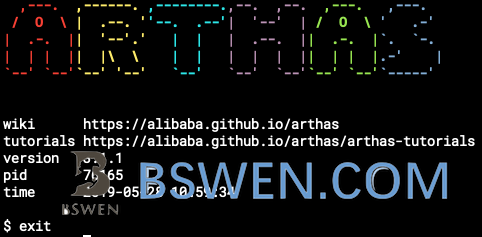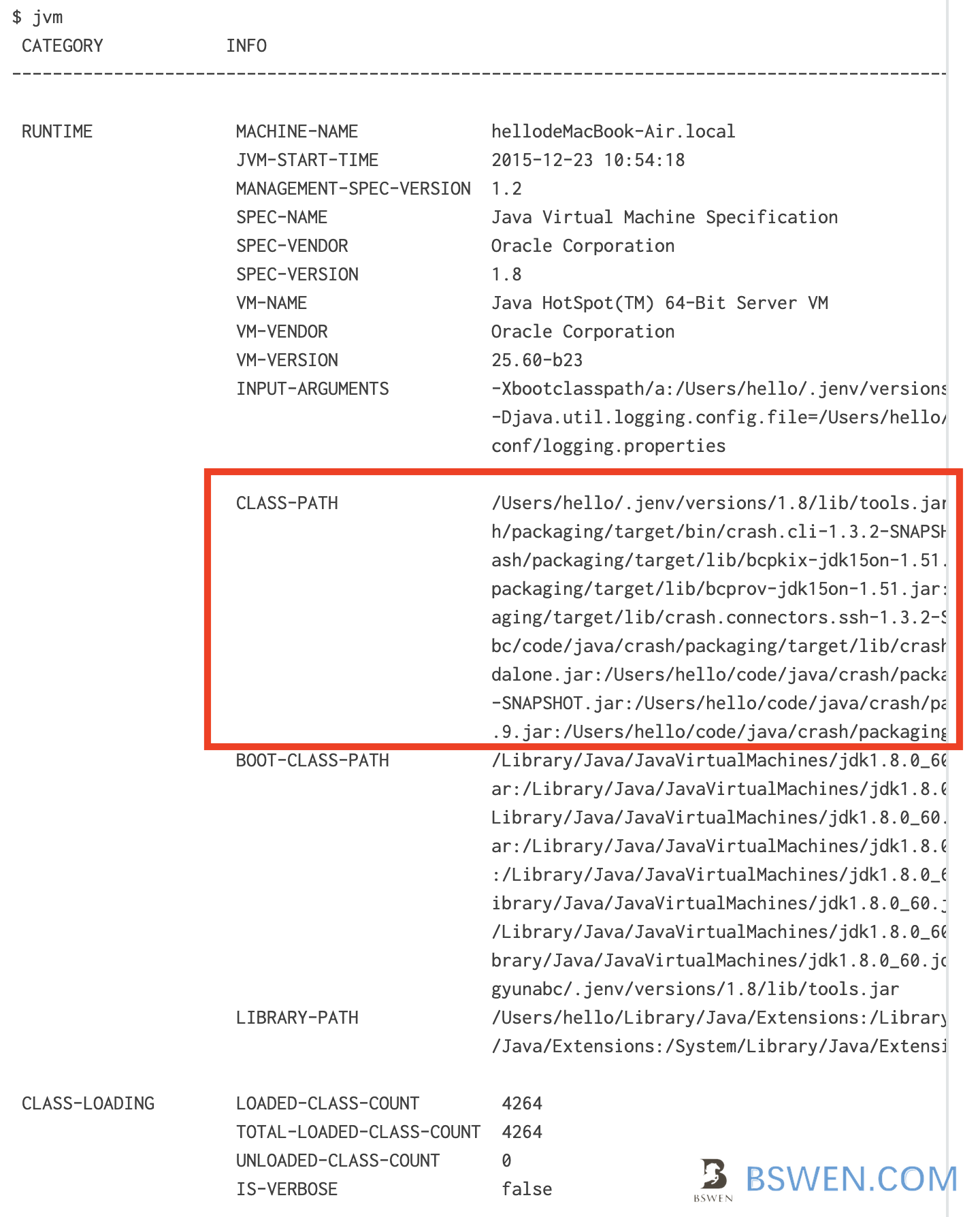How to print current JVM classpath without writing any code
1. The purpose of this post
This post demonstrates how to print the current JVM classpath without writing any code.
2. Environments
- Java 1.6+
3. How to print current JVM classpath without writing any code
3.1 The old way: Use System.getProperty() to get it
The traditional way to print the JVM classpath at runtime is to write the following code:
System.out.println(System.getProperties().get("java.class.path"));3.2 The new way: Use Arthas
Arthas is a free Java diagnostic tool provided by Alibaba. It is designed for troubleshooting production issues in Java applications without modifying code or restarting servers.
3.2.1 Download and install Arthas
wget https://alibaba.github.io/arthas/arthas-boot.jarjava -jar arthas-boot.jarYou would get this:

3.2.2 Start your application and find the PID of it
Now exit Arthas by entering this command:
exitStart your Java application and reference this article to find and determine the PID of your Java application.
3.2.3 Use Arthas to show your classpath at runtime
Start Arthas by entering:
java -jar arthas-boot.jarChoose the PID of your Java process and then enter this command:
jvmYou will get this result:

You can see that you can print the classpath without writing any code or restarting your application.
Summary
This post demonstrated two methods to print the current JVM classpath without writing any code. The traditional method involves using System.getProperty(), while the modern approach leverages the Arthas diagnostic tool. Arthas is particularly useful for production environments, as it allows you to troubleshoot issues without restarting the application. By following the steps outlined in this post, you can easily retrieve the classpath information for your Java applications.
Final Words + More Resources
My intention with this article was to help others share my knowledge and experience. If you want to contact me, you can contact by email: Email me
Here are also the most important links from this article along with some further resources that will help you in this scope:
Oh, and if you found these resources useful, don’t forget to support me by starring the repo on GitHub!